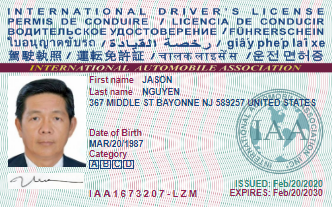Introduction
In today's digital age, technology plays a crucial role in the management of different elements of our lives. One location where innovation has revealed exceptional potential is in the management of Internally Displaced Persons (IDPs). The predicament of IDPs often develops from conflict, natural catastrophes, or systemic discrimination, leading to substantial obstacles in supplying them with needed assistance. This post explores how innovative innovations can help deal with these difficulties, simplify procedures, and enhance the total management of IDPs.
Utilizing Innovation To Manage IDPs
The management of IDPs needs robust frameworks that can adjust to their progressing needs. Using technology to handle IDPs enables companies and governments to react better by leveraging data analytics, mobile applications, and blockchain technology. Through these tools, stakeholders can supply much better services, track displacement patterns, and improve communication with afflicted populations.
1. Comprehending the Idea of IDPs
Internally Displaced Persons (IDPs) describe people who have actually been forced to flee their homes however stay within their nation's borders. Unlike refugees who cross global limits, IDPs face special obstacles connected to legal defenses and access to assistance. Comprehending these characteristics is essential for effective management.
1.1 The Reasons for Internal Displacement
Internal displacement can originate from numerous factors:
- Armed Dispute: Ongoing wars or civil discontent lead lots of people to leave their homes. Natural Disasters: Earthquakes, floods, and other disasters require communities to evacuate. Development Tasks: Facilities jobs may displace populations without appropriate settlement or resettlement plans.
1.2 The Effect of Internal Displacement on Communities
The results on displaced individuals are extensive:
- Loss of Livelihoods: Many lose their jobs and ways of support. Psychological Trauma: The experience of displacement can cause mental health issues. Social Fragmentation: Neighborhoods may end up being fragmented as households are separated.
2. Present Obstacles in Handling IDPs
Managing IDP populations presents several difficulties for federal governments and humanitarian organizations:
2.1 Lack of Precise Data
Without precise information about the number and place of IDPs, it ends up being challenging to assign resources effectively.
2.2 Inadequate Interaction Channels
Many displaced people lack access to trusted info regarding readily available assistance services or safe areas.

2.3 Coordination Amongst Stakeholders
Multiple organizations frequently work independently; coordination is critical for reliable reaction efforts.
3. Role of Innovation in Resolving Challenges
Technology provides solutions that can assist get rid of these obstacles:
3.1 Data Analytics for Better Decision-Making
By using information analytics platforms, companies can evaluate trends in displacement patterns, assisting them make informed decisions about resource allocation.
3.2 Mobile Applications for Real-Time Info Sharing
Mobile apps can facilitate interaction in between displaced persons and aid companies-- providing updates on readily available resources or safe locations.
3.3 Blockchain Innovation for Transparency
Blockchain technology promotes openness by safely recording transactions connected to aid circulation-- guaranteeing that resources reach those who need them most.
4. Case Studies Demonstrating Efficient Use of Technology
Several initiatives around the world display how innovation has successfully managed IDP crises:
4.1 The United Nations' Use of Geographic Info Systems (GIS)
The UN uses GIS innovation to map displacement patterns properly; this help in planning interventions efficiently.
4.2 The Role of Social Media Platforms in Crisis Communication
Social media has actually proven important for real-time updates throughout crises-- helping firms interact rapidly with afflicted populations.
5. Strategies for Implementing Innovation Solutions
To successfully apply technology in managing IDP circumstances:
5.1 Engaging Local Communities
Local communities should be associated with establishing tech options; they understand their needs best.
5.2 Ensuring Accessibility
Ensuring that technological services are accessible to all segments of the population is crucial-- consider language barriers and literacy levels.
6. Future Trends in Technological Solutions for Handling IDPs
As we look ahead:
6.1 Expert system (AI) Enhancements
AI might even more boost predictive analytics regarding displacement patterns-- assisting companies expect crises before they escalate.
6.2 Increased Collaboration Across Borders
Global partnership might cause shared databases and resources that improve responses throughout areas experiencing similar challenges.
7. Conclusion: A Require Innovative Approaches
The management of Internally Displaced Individuals needs a multi-faceted approach integrating innovative technological solutions customized particularly for their requirements-- making it imperative for governments and companies alike to invest time and resources into these innovations.
FAQs
Q1: What need to I do if I am an internally displaced person? A1: Seek help from regional NGOs or federal government agencies dedicated to assisting displaced people find shelter and resources.
Q2: How does innovation improve interaction amongst help agencies? A2: Innovation enhances details sharing through platforms that enable real-time updates concerning readily available services or changes in conditions impacting IDPs.
Q3: Can I request an international driver's license online while being displaced? A3: Yes! Numerous nations provide online services where you can make an application for an international chauffeur's license even if you're presently displaced; just examine your regional regulations!
Q4: What are some examples of mobile apps developed for IDP assistance? A4: Apps like "Refugee Buddy" offer information on available services while "Catastrophe Emergency situation" offers informs throughout crises affecting your area!
Q5: How does blockchain make sure openness in help distribution? A5: Blockchain records transactions safely so that every help circulation is traceable; this reduces corruption risks making sure resources reach those who require them!
Q6: Exist specific technologies being developed for usage in Spain relating to internal displacement? A6: Yes! Various regional NGOs are collaborating with tech companies to produce applications concentrated on helping internally displaced individuals specifically within Spain's special context.
In conclusion, making use of innovation provides extraordinary chances when handling Internally Displaced Individuals effectively-- it's not merely about responding faster however tailoring solutions that respect human dignity while attending to intricate logistical obstacles head-on!